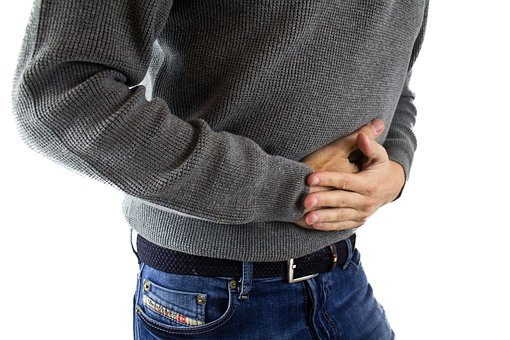Gastro-oesophageal reflux disease (GERD) is a digestive disorder that affects the lower esophageal sphincter resulting in acid reflux and ‘heartburn’. Gerd can cause the oesophagus to release inflammatory cytokines that attract inflammatory cells, increasing inflammation in the body; one way this can happen is if the mucosal membranes are exposed to acidic secretions too often, they may become irritated.
Symptoms include
- Heartburn – pain/discomfort just below the breastbone, usually worse after eating/lying down.
- Regurgitation of acid into the throat.
- Dysphagia – difficulty swallowing – as a result of scarring of the oesophagus.
- Persistent cough.

Those suffering from GERD usually take medication to keep symptoms at bay, however, this can disrupt the microbiome and also does not get to the root cause of the issue.
- Proton Pump Inhibitors (PPIs) work on parietal cells to reduce the production of stomach acid. However, PPIs may aggravate GERD and result in the proliferation of H pylori and gastric atrophy. They can also inhibit the absorption of vitamin B12 and zinc.
- Prokinetics enhance gut motility by increasing the frequency of small intestine contractions. Antacids neutralise the acidity of the stomach.
- H2-Receptor Antagonists block histamine 2, responsible for triggering acid production.
The root cause of GERD can be due to having low stomach acid as well as potential overgrowth of H.pylori (bacteria). Low levels of hydrochloric acid can cause carbohydrates to ferment which increase hydrogen (gas) as well as pressure in the stomach. The increase in hydrogen also raises levels of H.pylori and other pathogenic bacteria. As a result of this, H pylori can suppress gastric acid.
Weakening of the connective tissue in the lower esophageal sphincter which can increase the risk of having a hiatus hernia; this is when part of the stomach pushes up through the diaphragm. Those that have diabetes are likely to suffer from a hiatal hernia because the stomach takes longer to dispose of the stomach acid which can push up to the esophageal sphincter.
Other factors that can result in GERD is obesity, as being overweight could increase pressure on the stomach, which weakens the lower esophageal sphincter. Also eating meals that are high in fat can increase acidity levels because fatty meals tend to stay in the stomach for longer.
To manage symptoms of GERD, consume a low carbohydrate diet as this can reduce symptoms as effectively as taking medication like PPIs. By eliminating obvious trigger foods such as alcohol, caffeine, spicy food, chocolate and fatty foods, the stomach can digest optimally and prevent inflammation in the mucosal lining. Lifestyle factors like stress, lack of physical activity (leading to weight gain), smoking and alcohol can all impact GERD.
Other supplements a qualified Nutritionist or Functional Medicine Practitioner can recommend and prescribe dosage are
- Slippery elm mucilage soothes the throat and lining of the stomach and stimulates mucus secretion.
- Marshmallow soothes irritated mucous membranes and has been used as a remedy for ulcers.
- Liquorice increases mucin production and exhibits activity against H. pylori.
- Aloe vera is beneficial for its wound healing and anti-inflammatory properties.
- Zinc and vitamin A regulates mucosal integrity and protects against peptic acid injury.
- Glucosamine supports the synthesis of flavonoids and protects collagen from degradation.
- Probiotics inhibit the growth of H. pylori and improve the effectiveness of antibiotic treatment.
- Cranberry prevents many infections including H. pylori-induced stomach ulcers.
- HCl, pepsin and digestive enzymes normalise digestive function once healed.
If this resonates with you then…
Take advantage of our 15-minute sessions either with a Nutritionist or Functional Medicine Practitioner, designed to give you the support you need with your concerns and to get you started on your road to recovery.
Find very quick and effective results!





